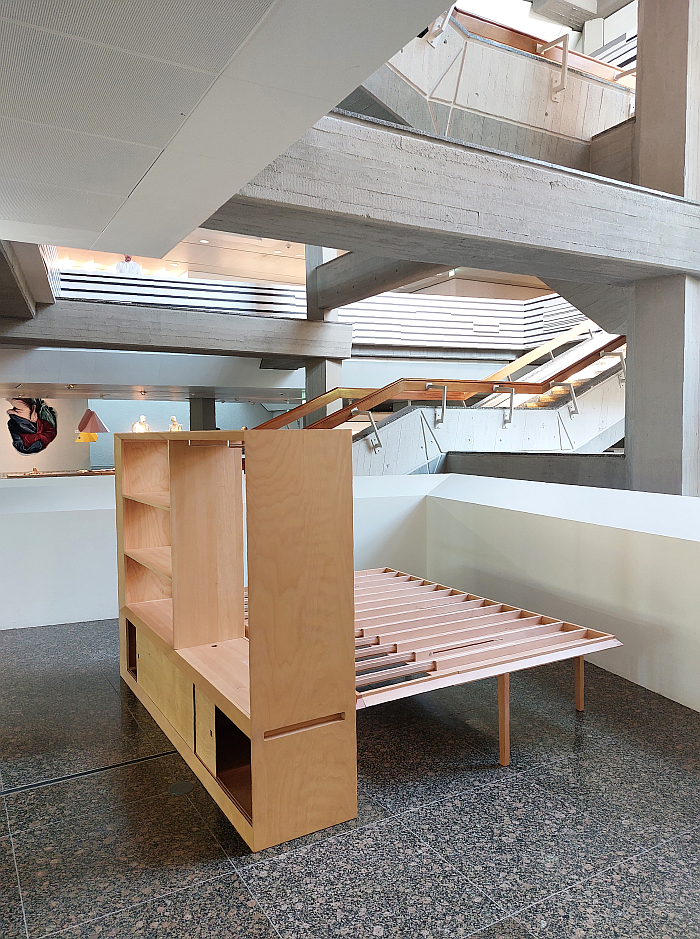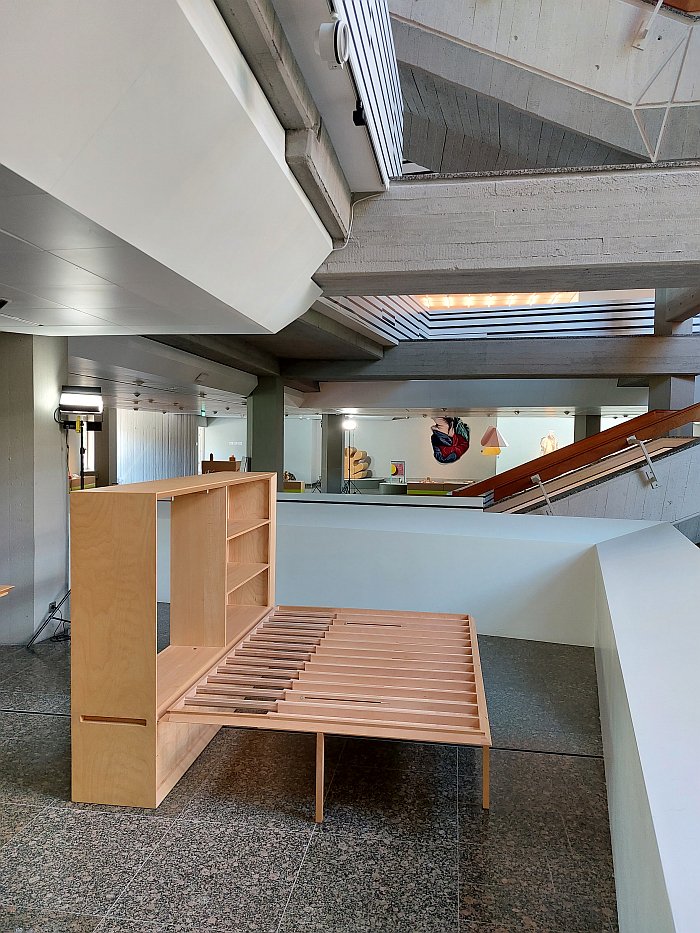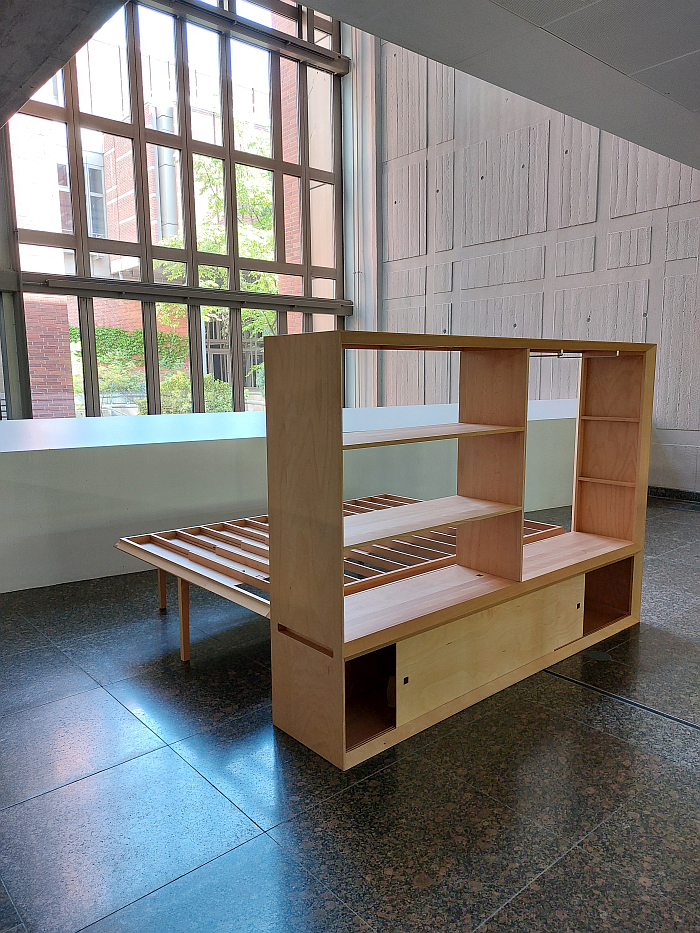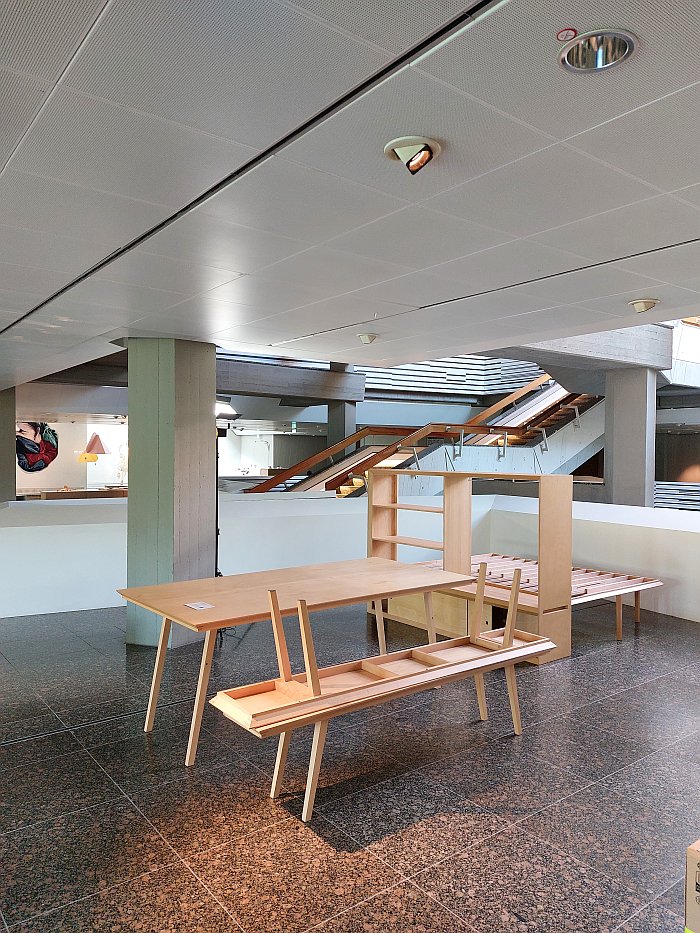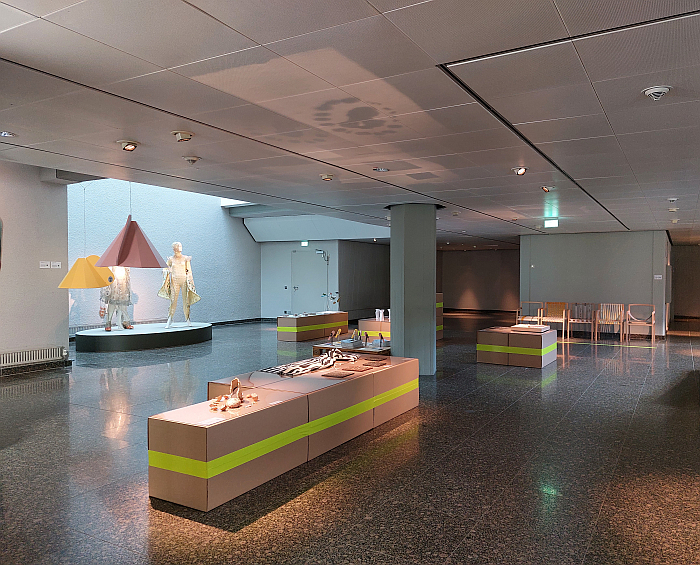
Curated by Alexandra Klatt, initiator and driving force behind Berlin Design Week, and staged in cooperation with the European Union National Institutes for Culture, EUNIC, Berlin and the Kunstgewerbemuseum Berlin, the latter also hosting the showcase, the 'Next' of Next: Young European Design isn't to be understood as the 'next generation of designers', or not solely it is also about that, but primarily is to be understood as the 'Next' step for design, the 'Next' challenge for design, the 'Next' direction design must take in context of not only the climate emergency but the many problems in and of contemporary society, both at the micro and the macro level, and at the global and local level. If one so will, design as we understand it has no answers to our contemporary realities and malaises, design as we understand it is increasingly becoming the problem.... 'Next'.
Presenting projects by some 30 designers/studios from a dozen European nations, including the UK, imagine if that return was to be permanent, how good would life be then, Next: Young European Design 2024 features a broad scope of not only positions on the role, function and practice of design in a tangible near future, nor only a broad scope of processes and approaches, but also a broad scope of arenas in which design is active, thereby helping underscore the universality of the challenge at hand. And also that the 'Next' of the title isn't the 'Next' new object. Nor the 'Next' new design genre.
Much as we'd like to make note here of all the presented projects, limits of time and space mean we simply can't, mean we must restrict ourselves; whereby what follows shouldn't be seen as a 'Best off, or the 'Highlights' from Next: Young European Design 2024, far from it, that's really not how we rock, 'tis but a snapshot. And we may very well return to one or the other here unnamed project at a later date.
Details of all featured creatives can be found at https://berlindesignweek.com
And for all in or near Berlin Next: Young European Design 2024 can be viewed at the Kunstgewerbemuseum, Matthäikirchplatz, 10785 Berlin, until Sunday May 26th.Further information on opening times and ticket prices can be found at www.smb.museum/kunstgewerbemuseum
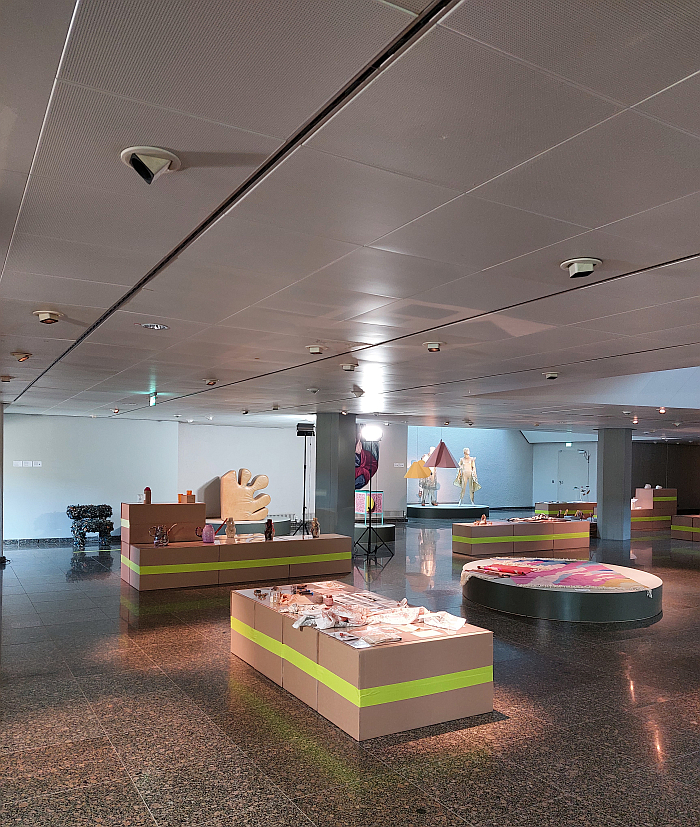
The principle of the Tooth Clock by Ljubljana, Slovenia, based Studio Prapra a.k.a. Sara Badovinac and Peter Zabret is as simple as the resulting object is charming and engaging. As we all know you should brush your teeth for three minutes. An apparently simple challenge that we all regularly fail. While claiming we didn't. Whereby there are ways to ensure that you can meet your target: you could set a stopwatch, download an app or you could buy a toothbrush that contains rare earths to enable it to tell you when the 3 minutes is up. And then replace it in a couple of years. Alternatively you could set your Tooth Clock: a pleasingly formed, scaled and proportioned two-piece glass object which, using nothing more complicated than the simplicity of gravity and the mathematics of the hourglass principle, transfers water from the uppermost container to the lowermost... it taking three minutes to empty the uppermost container. Which is when Tooth Clock gets really interesting: having transferred the water from the uppermost container to the lowermost, you now have a glass of water with which to rinse your mouth.
And while, yes, we understand the argument that an object is being produced, distributed and sold when you could just look at a clock, or guess, one the one hand a glass of water to rinse your mouth with is very welcome, your going to need water, you've now got water, water which is a waste product of a timing function. And on the other hand Tooth Clock is as much about visualising our relationships with water in context of the banality of daily life, and thereby forcing one to actively consider one's use of water in context of the banality of daily life, as it is about moving water by way of measuring time. It's arguably communication design more than product design. Communication that not only coerces you to use water in a more sustainable and frugle manner than you, potentially, otherwise would, but which provides a framework within which to appreciate why that is good and necessary and where and how you could do repeat that feat elsewhere. And it is a pleasingly formed, scaled and proportioned two-piece glass object that is simply unable to clutter any bathroom. Wouldn't know how to. In addition, and returning to the pedagogic functionality, we'd imagine, we don't know, but we imagine, Tooth Clock is a nice, playful, analogue interactive, device via which to educate children not only of the necessity of thorough tooth cleaning, but just how long three minutes is.
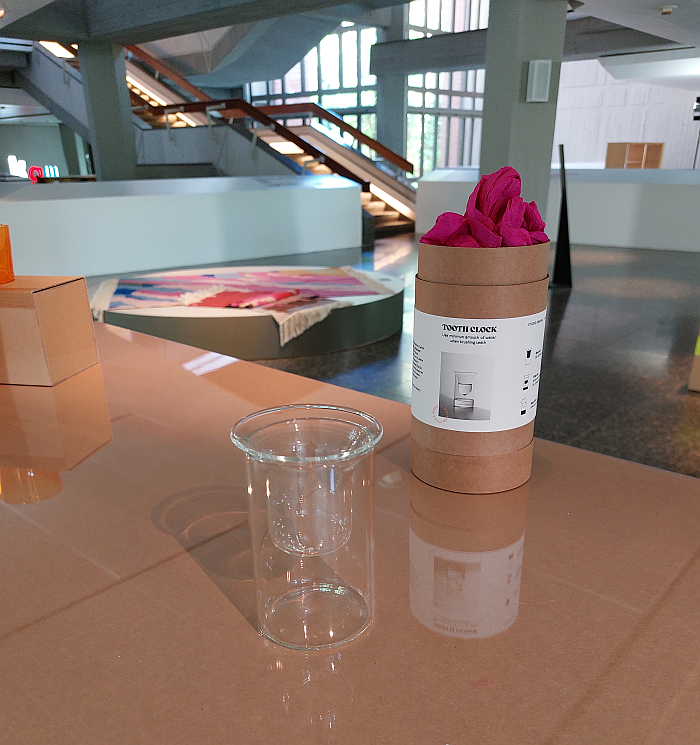
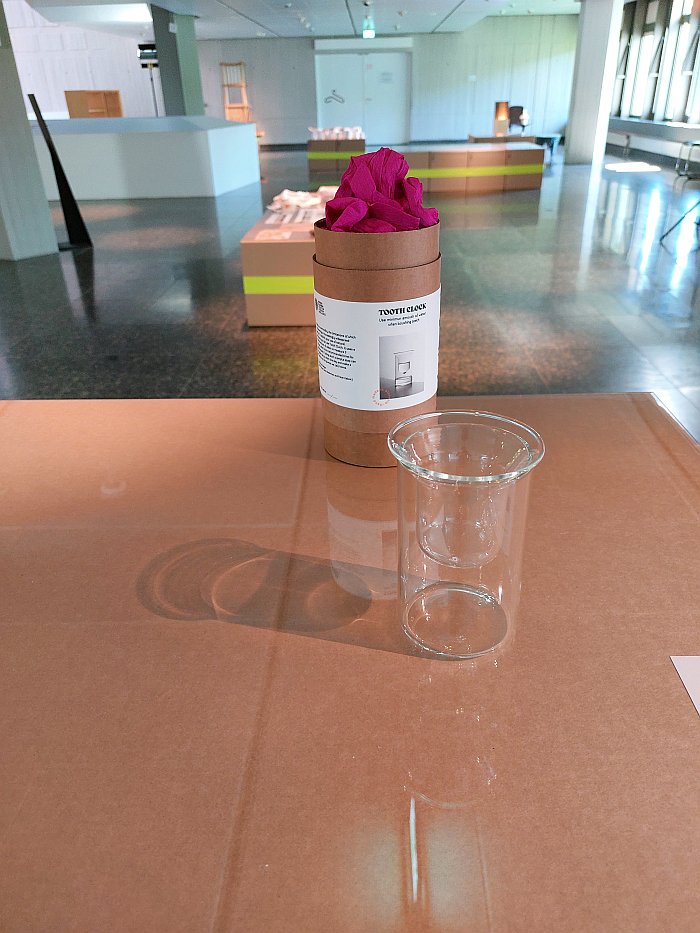
As one would expect novel materials were very much to the fore at Next: Young European Design 2024, and have long been an active area of research and experimentation by young designers, as oft noted in the course of our, formerly annual, #campustour travels, no design school graduate exhibition is complete without experimentation with novel materials. If experimentation that, certainly at a commercial level, has moved little past the experimental. But that day must come.
The tangibility of that day being neatly underscored by Łódź, Poland, based Weronika Wojnarowicz's coat and clothes hangers made from a novel biomaterial composed of cork granules and dust. Thus a biomaterial that very pleasingly employs waste material from the processing of a cork that is a fascinating sustainable material that brings all manner of advantages with it, and which needs must should be more widely and inventively employed than it currently is, certainly before we destroy the climate to a degree that destroys the cork oaks habitat, and which through increased use will, would, produce increased levels of waste. Which we now have a use for.
And for all the focus of Weronika's presence at Next is the coat hanger, the more important part is the research alluded to on the pedestal; those innumerable recipes Weronika has tried, some of which worked, some of which failed, and also the possible uses the novel material allows, including, for example, the production of filaments, string, with all the possibilities that opens in terms of weaving and basketry and also, and arguably most interestingly, 3D printing, that production technology that in conjunction with novel materials will define the future. Once that is we've worked how to use them. Projects such as Weronika's are an important part of that process.
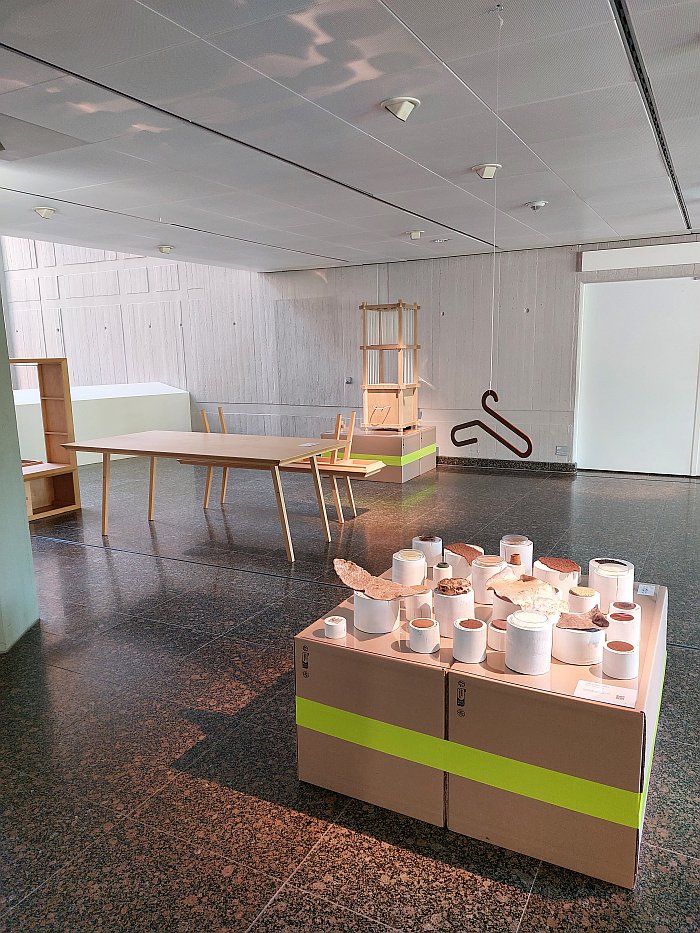
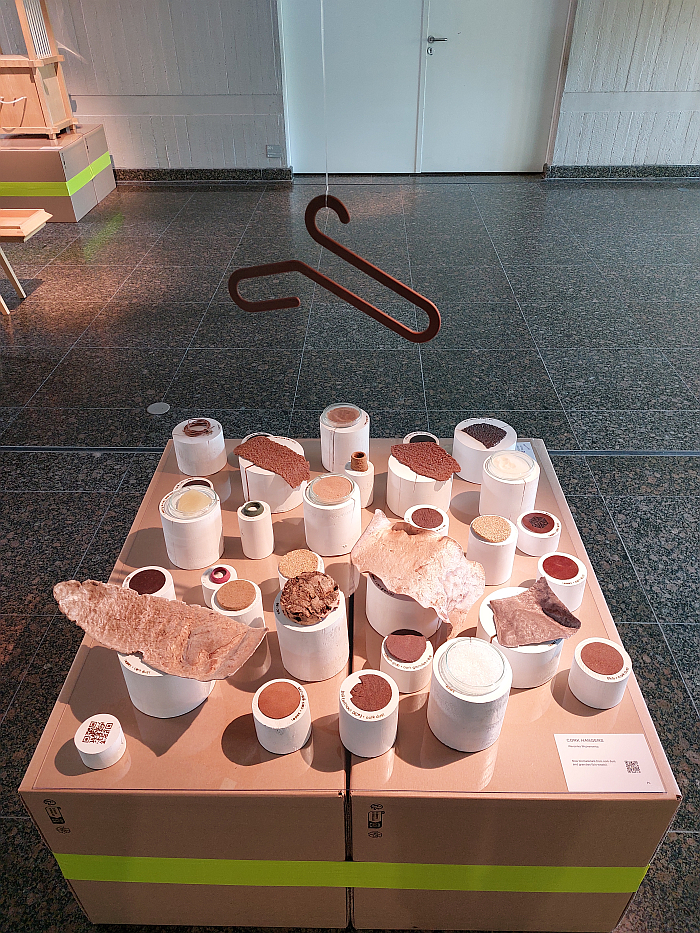
As with every aspect of life and society AI will invariably make inroads into furniture design and the design of our objects of daily use and thereby into our interior design. There will, for example, and without question, be a great many manufacturers getting increasingly excited about the idea of letting AI systems design objects for them, and if they can then have them created by digital machines, for example 3D printers, they will get even more excited. But what does that mean for our furniture? What does that means for our interiors? What does that mean for our relationships with our furniture and our interiors? Do we not need the input of actual human experience?
With Me, Myself, AI Academy of Fine Arts, Warsaw, graduate Janek Wilczak reflects on such a future. Specifically Janek used an AI system to design a chair, a table and ceramic object, if one so will Janek introduced his AI system to the concept of 'chair', 'table' and 'ceramic object' and then asked it to design all three. And as his AI collaborator designed Janek continually tweaked the learning, played with the parameters, and thereby influenced the final form of the objects. If one so will, and as discussed in context of music composition from Can You Hear It? Music and Artificial Intelligence at the Museum für Kunst und Gewerbe, Hamburg, AI made suggestions which Janek then developed based on his understandings and positions. Is that a possible future solution? Is that a better possible future solution rather than AI designing alone? And not just in terms of furniture but in wider terms of our relationships with AI, in our integration of AI into daily life? Or should a designer develop their ideas exclusively from their daily experience of life and society, from their appreciation of contemporary life and society? If we base the novel on the objects that exist rather than the realities that exist is that not a journey down a dead end?
Just some of the thoughts and questions to work through while vieweing the three objects, objects which give no information as to how they were developed, no information on how much is Janek and how much is the AI. And objects that in themselves are not unappealing; whereby we spent most of our time exploring the form and construction of the backrest of the chair, the joints of the chair frame, the grove that runs round the table top and the functional solution of the vase/carafe, all of which very much appealed to us. But who is most responsible for each? Is that important to know? And who is responsible for the clear historic references in the table base? And do we find the authorship as good as we find that which has been realised?
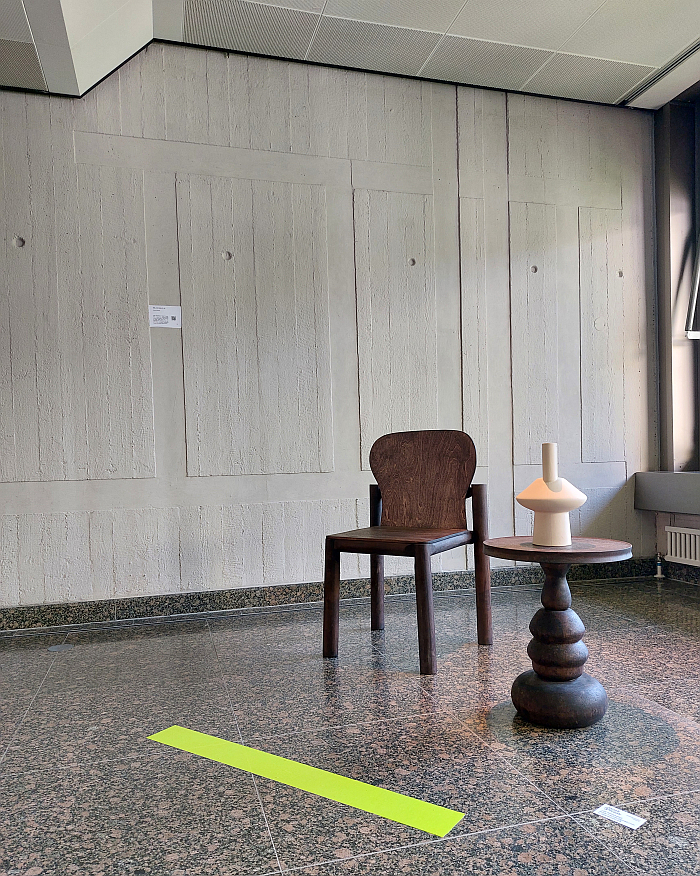
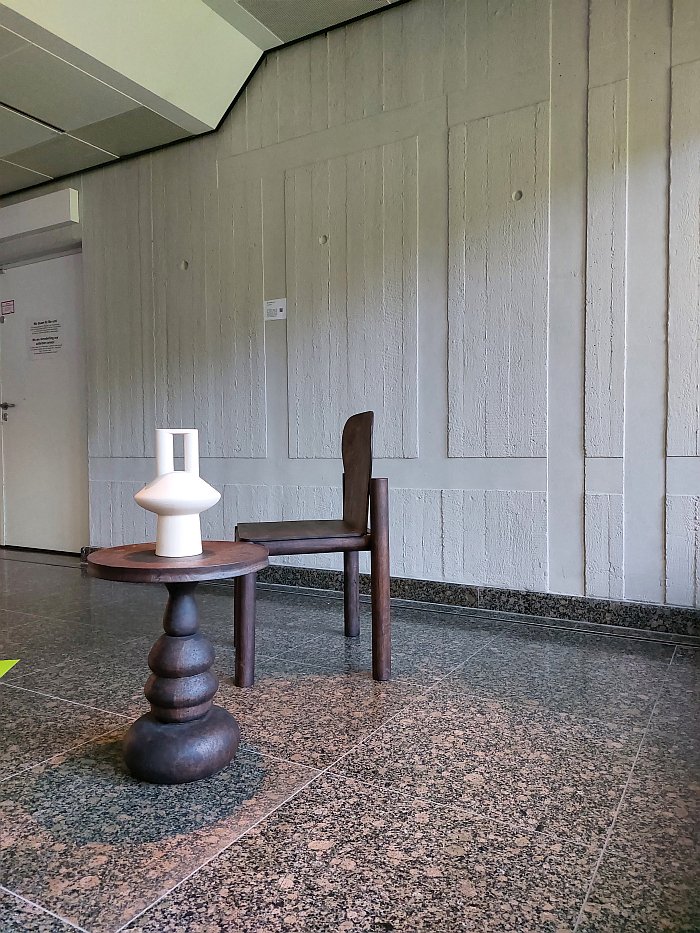
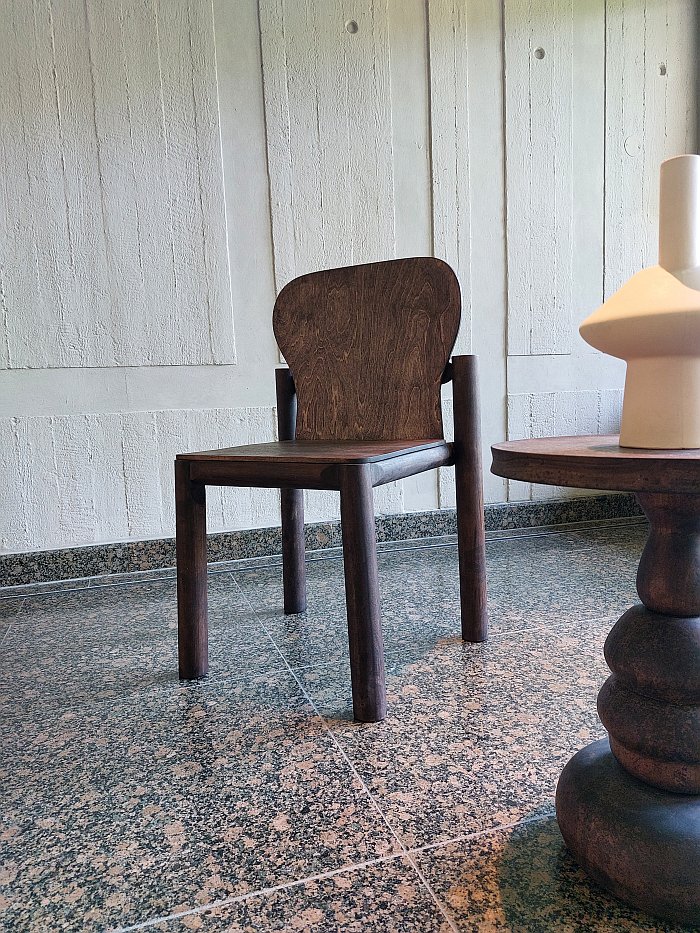
A few years ago there was a lot of fuss about design for the 'urban nomad', a consequence of a fever within a European design community who had ceased to think for themselves and started to unquestioningly follow the utterings of self-proclaimed gurus. Design has since recovered from that fever, even if, as with all epidemics, the risk of a return is still ever present; however, and while flatly rejecting the 'urban nomad' as either an actual thing or as a desirable thing in a society aiming, that should be aiming, to achieve a self-sufficient sustainability, there is without question a need and necessity for furniture that is more responsive to the realities of contemporary life and contemporary living than most of our contemporary furniture is, based as it is in the responses to life and living centuries ago. Including a need for transformable furniture of the types the 19th century was phenomenally keen on, albeit in much more reduced, rational and material light expressions and realisations. And over the years we've seen numerous very nice proposals for just such. Proposals Wanderbox 2.0 by Wolfsberg, Austria, based architect and designer Stefan Cancola very neatly expands. Literally.
Essentially a rectangular box, albeit a rectangular box not only within which is contained a table, benches, shelving, storage and a bed, thus everything one needs for a basic room setting, but a rectangular box formed from the furniture it contains — the table top and benches and bed base forming the outer walls, the shelves and storage the central core — Wanderbox 2.0 understands itself very much in the myth of the 'urban nomad'; however, much as the carrying handles are clearly more for decoration than function, and as such expose the improbability of the position, as a proposition it also very openly and invitingly recommends itself for anyone living in a small room in a shared flat who needs a bed but also needs floor space, or anyone who doesn't have space for a guest bed, but often has guests who want a bed. Or as a makeshift bedroom in an office or studio for those occassions when people spend the night there.
In addition, and perhaps, arguably, most interestingly for us, we can well imagine Wanderbox 2.0 as Aidbox 2.0: as the basis for emergency accommodation, for example, in context of the floods, earthquakes, fires, et al that are going to become much more common. We can well imagine you can get a goodly number in a shipping container, arguably more so if they were normed à la the IKEA shipping principle, and then they can be simply shipped to whichever sports hall or community centre is housing those affected, and where they can be quickly arranged and would provide not only the required sleeping and storage space, and also tables and seating, but with the shelving elements acting as natural room dividers, providing for that all important privacy. And that in a much more pleasing concept, more comfortable and accommodating concept, than the popularly used camp bed solution. And then when the emergency is over, pack them together and back to the storeroom. Yes such would involve moving away from the finely carpeted construction of Wanderbox 2.0, and require the use of cheaper wood, but would be more useful for society that any guru has ever been. Or ever will be.
